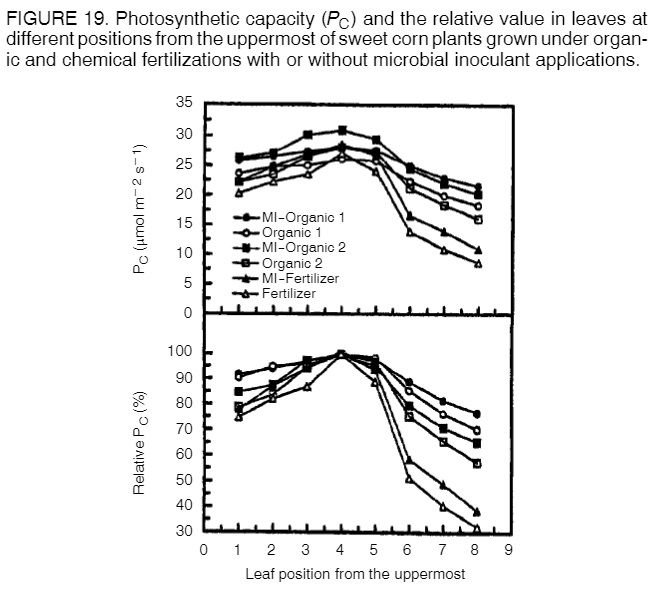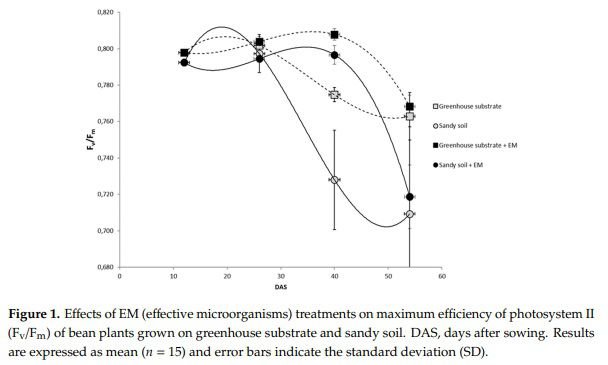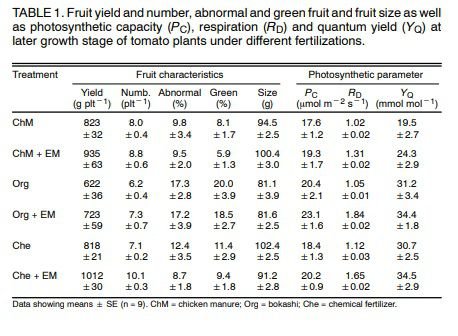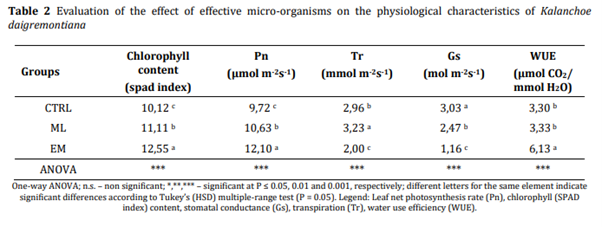Photosynthesis plays a decisive role in crop production. Photosynthesis occurs in all living plants, it is the process plants use to capture energy from sunlight and then to convert it into biochemical energy, which is subsequently used to support nearly all life on Earth. Plant growth depends on photosynthesis and improving photosynthesis can contribute toward greater food security in the coming decades as world population increases.
Studies are being conducted around the world which are showing microbial inoculants and biological products can have a significant impact on photosynthesis. This article sets out to show the impact of EM on photosynthesis and how it impacts this crucial process.
Increasing Photosynthetic Rate
When EM is applied to soil or plant leaf surfaces, the populations of photosynthetic bacteria and N fixing bacteria increase dramatically. This phenomenon is associated with the growth of more vigorous plants, higher plant yields, and improved crop quality (based on higher contents of Vitamin C and sugar in fruits) compared with no EM treatment. The high number of these beneficial microorganisms in the soil and on the leaf enhances the photosynthetic rate.
In the following Trial published in the Journal of Crop Production showcasing the effects of EM and Organic and Chemical Fertilisers on the growth and Photosynthesis of Sweet Corn showed EM applications with both organic and chemical fertilisers promoted plant growth at all growth stages and increased grain yield as a consequence. This was attributed to increased photosynthetic capacity and nutrient availability. The root quality shown by root number and root length and the root quality shown by the respiration rate were increased by EM applications. Senescence in terms of photosynthetic performance was delayed by EM applications.

This trial published in the Journal of Molecular Sciences showed that Soil Application of EM maintains Leaf Photosynthetic Efficiency, Increases Seed Yield and Quality Traits of Bean Plants Grown on Different Substrates. Specifically, it found EM-treated plants maintained optimum leaf photosynthetic efficiency two weeks longer than the control plants, and increased yield independent of substrate. The levels of seed nutritionally relevant molecules (proteins, lipids, and starch) were only slightly modified, apart from the protein content, which increased in plants grown in sandy soil.

In this next trial published in the Journal of Crop Production looked at the Effects of Organic Fertilizers and a Microbial Inoculant on Leaf Photosynthesis and Fruit Yield and Quality of Tomato Plants. EM inoculated to bokashi and chicken manure and directly applied to soil together with chemical fertilizer increased photosynthetic activity, dark respiration and quantum yield. This result was consistent with plant growth, plants appearance and fruit yield at the later growth stages.

Increasing Stomatal Response
It has been shown through multiple trials that using EM will enhance stomatal opening increasing carbon assimilation. In this specific published trial showcasing the effects of Effective Microorganisms on Yield and Quality of Vegetable Cabbage Comparatively to Nitrogen and Phosphorus Fertilizers showed that EM treatment increased the photosynthesis rate in cabbage plants, as well as stomatal conductance and intracellular CO2 concentration.
In this trial published in the Journal of Crop production the Effect of EM on Stomatal response on Maize leaves was analysed. This trial uncovered that Sudden illumination of plants maintained in the dark showed that the leaf stomata of the EM-treated plants opened more rapidly than water-treated control plants. When leaves were excised and subjected to dehydration, the stomata closed more slowly (i.e., remained open longer) for the EM-treated plants compared with the water-treated control plants. There was no effect of EM on cuticular conductance in any of the experiments. The results of this study indicate that EM cultures contains bioactive substances that can significantly affect leaf stomatal response.

Increase the Chlorophyll content in the leaf
In this trial published in the World Journal of Advanced Research and Reviews they looked at the effect of EM on germination and root growth in Kalanchoe daigremontiana. The physiological analysis (Table 2) of plants showed there is a significant increase in the parameters analysed in the thesis with EM. There was a significant increase in the chlorophyll content, 12.55 (EM) compared to 11.11 (ML) and 10.12 of the untreated control. There was also a significant increase in Leaf net photosynthesis rate (Pn) and Water use efficiency (WUE).

In Summary, this article outlines that EM impacts photosynthesis through increasing the photosynthetic rate, enhancing the stomatal response, and increasing chlorophyll in the leaf. Other factors that may play a role in photosynthetic capacity include EM increasing the nutrient availability in the soil making more available as and when the plant requires it. Also the increased availability of microbial synthesized substances like phytohormones and plant growth hormones (auxins, cytokines) will also provide significant benefits to the plant and its growth response.
Source link














